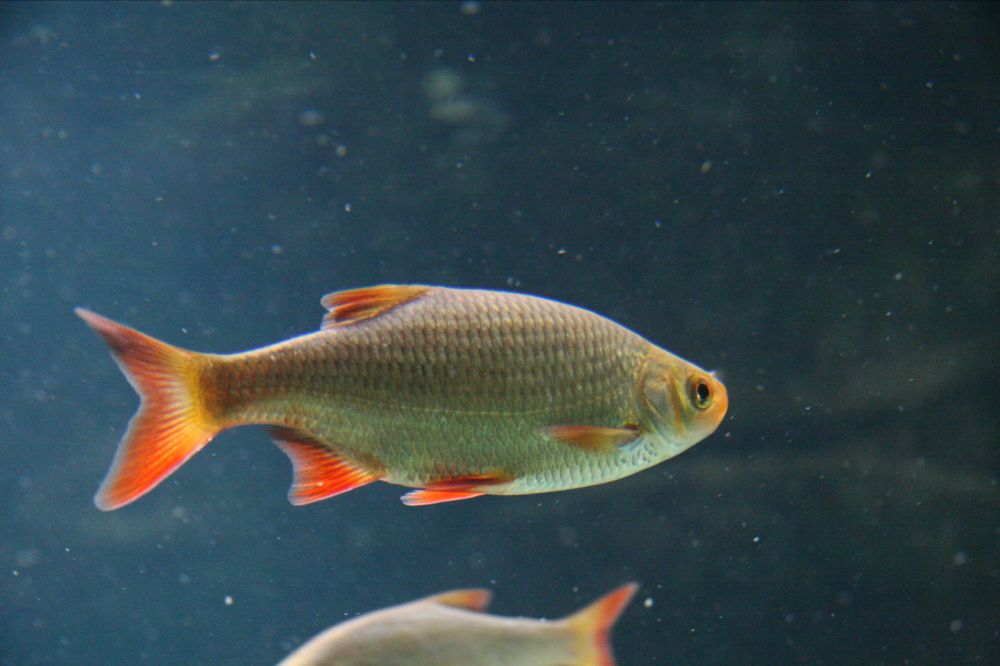
Read the article with FishingTheSpot: the rudd fish
Keep an eye on this subject!
Thousands of species spotlights and techniques but also all the local information about your city!



Meet other anglers near you and share your fishing fishing trips, afoot or on a boat, at sea or in freshwater
See the fishing tripsThe Rudd fish

All year
15 cm
Did you fish
this species this month?
The Rudd fish belongs to the Cyprinidae family. The current size of the rudd fish is 15 to 30 cm for a weight of 0.5 to 1 kg. It can reach nearly 51 cm in height and weigh 2 kg. The rudd fish can live about 17 years. Egg laying is split and takes place from April to June. The female lays 100,000 to 200,000 eggs. Fishing for rudd is allowed all year round.
It is easily identifiable by the diver: the silvery appearance of its body. A closer look at the position of the dorsal and ventral fins will then make the difference between the two species. If the ventral fins are placed further forward than the dorsal fin, it is the ratchet. The mouth, small, terminal, opens obliquely upwards. The back of the rattlesnake is brownish green, the sides and belly are silvery. The iris of the eyes is yellow with golden reflections. Dorsal, anal and pelvic fins are bright red in color.
The Rudd fish lifestyle
The Rudd fish is essentially omnivorous, it feeds on drifting insects, zooplankton and seeds on the surface of the water. They also eat mollusks, crustaceans, fish eggs, macrophytes and phytoplankton. For some adult individuals, plants are an important part of the diet. In winter, it reduces its diet.
Spawning takes place in spring (April to June) when the water temperature is 15 degrees or higher. Males show a rash of small tubers of greyish white spawning on their heads and backs: "wedding buds". This is also noticeable in females, but in a less developed way. Egg laying is split (done in several stages). Sticky, colorless or pale yellow eggs (100,000 to 200,000 eggs per female) are laid in vegetation or on stones. They are 1.5 mm in diameter and hatch after 3 to 10 days. The larvae have a yolk vesicle and remain passively attached to the plants or at the bottom until the vesicle resorbs. Then they feed on animal plankton near the shore. Sexual maturity is reached after 2-3 years.
The Rudd fish habitat
During the summer, it normally lives in schools with other Cyprinidae near the surface. It is a fish that likes very grassy places with calm waters such as lakes, ponds and rivers with weak currents.
Rattan are found throughout Europe except in the Iberian Peninsula, northern Scandinavia, Scotland and southern Greece.
The Rudd Fish angling
The Rudd fish can be fished all year but are very abundant from June to September. Fine lines are best suited for Rudd fishing. Maggots, mud worms, are bait that work particularly well. Used to eating on the surface, it is possible to fish with a fly in the river.


